Cover
Copyright
Contents at a Glance
Contents
About the Author
Introduction
1: Welcome to C
Programs, Software, and Operating System
Machine Language and Assembly Language
Procedural Languages
Object-Oriented Languages
Terminology in Computers
Compiled and Interpreted Languages
Compilation
Interpretation
Your First C Program
Salient Features of C
Implicit Type Conversion
Explicit Type Conversion
2: Control Statements
Selection Statements
Iteration Statements
Jump Statements
2-1. Sum 1 to N Numbers
Problem
Solution
The Code
How It Works
2-2. Compute the Factorial of a Number
Problem
Solution
The Code
How It Works
2-3. Generate a Fibonacci Sequence
Problem
Solution
The Code
How It Works
2-4. Determine Whether a Given Number Is Prime
Problem
Solution
The Code
How It Works
2-5. Compute the Sine Function
Problem
Solution
The Code
How It Works
2-6. Compute the Cosine Function
Problem
Solution
The Code
How It Works
2-7. Compute the Roots of Quadratic Equation
Problem
Solution
The Code
How It Works
2-8. Compute the Reverse of an Integer
Problem
Solution
The Code
How It Works
2-9. Print a Geometrical Pattern Using Nested Loops
Problem
Solution
The Code
How It Works
2-10. Generate a Table of Future Value Interest Factors
Problem
Solution
The Code
How It Works
3: Functions and Arrays
3-1. Determine the Value of Pi
Problem
Solution
The Code
How It Works
3-2. Pick the Prime Numbers from a List of Numbers
Problem
Solution
The Code
How It Works
3-3. Sum Numbers Using Recursion
Problem
Solution
The Code
How It Works
3-4. Compute the Fibonacci Sequence Using Recursion
Problem
Solution
The Code
How It Works
3-5. Compute the Factorial of a Number Using Recursion
Problem
Solution
The Code
How It Works
3-6. Search the Largest Element in an Array of Integers
Problem
Solution
The Code
How It Works
3-7. Solve the Classic Problem of the Towers of Hanoi
Solution
The Code
How It Works
3-8. Solve the Eight Queens Problem
Problem
Solution
How It Works
3-9. Compute Permutations and Combinations of a Given Set of Objects
Problem
Solution
The Code
How It Works
3-10. Perform the Summation of Two Matrices
Problem
Solution
The Code
How It Works
3-11. Compute the Transpose of a Matrix
Problem
Solution
The Code
How It Works
3-12. Compute the Product of Matrices
Problem
Solution
The Code
How It Works
4: Pointers and Arrays
4-1. Retrieve Data from an Array with the int Type Data
Problem
Solution
The Code
How It Works
4-2. Retrieve Data from an Array Using the Array Name
Problem
Solution
The Code
How It Works
4-3. Retrieve Data from an Array with char and double Type Data
Problem
Solution
The Code
How It Works
4-4. Access the Out-of-Bounds Array Elements
Problem
Solution
The Code
How It Works
4-5. Store Strings
Problem
Solution
The Code
How It Works
4-6. Store Strings Without Initialization
Problem
Solution
The Code
How It Works
4-7. Store Strings in an Interactive Session
Problem
Solution
The Code
How It Works
4-8. Retrieve the Addresses of Elements in a Two-Dimensional Array
Problem
Solution
The Code
How It Works
4-9. Retrieve the Base Addresses of Rows in a Two-Dimensional Array
Problem
Solution
The Code
How It Works
4-10. Retrieve Data from a Two-Dimensional Array
Problem
Solution
The Code
How It Works
4-11. Retrieve Data from a Two-Dimensional Array Using an Array Name
Problem
Solution
The Code
How It Works
4-12. Retrieve Data from an Array Using an Array of Pointers
Problem
Solution
The Code
How It Works
4-13. Swap Strings Physically
Problem
Solution
The Code
How It Works
4-14. Swap Strings Logically
Problem
Solution
The Code
How It Works
4-15. Store Strings Interactively
Problem
Solution
The Code
How It Works
4-16. Pass Arguments to a Program from the Command Line
Problem
Solution
The Code
How It Works
4-17. Retrieve Stored Strings Using a Pointer to a Pointer
Problem
Solution
The Code
How It Works
5: Functions and Structures with Pointers
5-1. Pass Arguments by Reference to a Function
Problem
Solution
The Code
How It Works
5-2. Display Data Stored in Nested Structures
Problem
Solution
The Code
How It Works
Dot Operator
Arrow Operator
5-3. Build a Structure Using a Function
Problem
Solution
The Code
How It Works
5-4. Modify the Data in a Structure by Passing It to a Function
Problem
Solution
The Code
How It Works
5-5. Modify the Data in a Structure by Passing a Pointer-to-Structure to a Function
Problem
Solution
The Code
How It Works
5-6. Store and Retrieve Data Using an Array of Structures
Problem
Solution
The Code
How It Works
5-7. Store and Retrieve Data Using an Array of Structures in Interactive Mode
Problem
Solution
The Code
How It Works
5-8. Invoke a Function Using a Pointer-to-Function
Problem
Solution
The Code
How It Works
5-9. Implement a Text-Based Menu System
Problem
Solution
The Code
How It Works
6: Data Files
6-1. Read a Text File Character by Character
Problem
Solution
The Code
How It Works
6-2. Handle Errors When File Opening Fails
Problem
Solution
The Code
How It Works
6-3. Write to a Text File in Batch Mode
Problem
Solution
The Code
How It Works
6-4. Write to a Text File in Interactive Mode
Problem
Solution
The Code
How It Works
6-5. Read a Text File String by String
Problem
Solution
The Code
How It Works
6-6. Write to a Text File Character by Character
Problem
Solution
The Code
How It Works
6-7. Write Integers to a Text File
Problem
Solution
The Code
How It Works
6-8. Write Structures to a Text File
Problem
Solution
The Code
How It Works
6-9. Read Integers Stored in a Text File
Problem
Solution
The Code
How It Works
6-10. Read Structures Stored in a Text File
Problem
Solution
The Code
How It Works
6-11. Write Integers to a Binary File
Problem
Solution
The Code
How It Works
6-12. Write Structures to a Binary File
Problem
Solution
The Code
How It Works
6-13. Read Integers Written to a Binary File
Problem
Solution
The Code
How It Works
6-14. Read Structures Written to a Binary File
Problem
Solution
The Code
How It Works
6-15. Rename a File
Problem
Solution
The Code
How It Works
6-16. Delete a File
Problem
Solution
The Code
How It Works
6-17. Copy a Text File
Problem
Solution
The Code
How It Works
6-18. Copy a Binary File
Problem
Solution
The Code
How It Works
6-19. Write to a File and Then Read from That File
Problem
Solution
The Code
How It Works
6-20. Position a Text File to a Desired Character
Problem
Solution
The Code
How It Works
6-21. Read from the Device File Keyboard
Problem
Solution
The Code
How It Works
6-22. Write Text to the Device File Monitor
Problem
Solution
The Code
How It Works
6-23. Read Text from the Device File Keyboard and Write It to the Device File Monitor
Problem
Solution
The Code
How It Works
7: Self-Referential Structures
7-1. Generate Lists of Numbers in an Interactive Manner
Problem
Solution
The Code
How It Works
7-2. Create a Linked List Using Anonymous Variables
Problem
Solution
The Code
How It Works
7-3. Delete a Component from a Linked List
Problem
Solution
The Code
How It Works
7-4. Insert a Component into a Linked List
Problem
Solution
The Code
How It Works
7-5. Create a Linked List in an Interactive Session
Problem
Solution
The Code
How It Works
7-6. Process a Linear Linked List
Problem
Solution
The Code
How It Works
7-7. Create a Linear Linked List with Forward and Backward Traversing
Problem
Solution
The Code
How It Works
8: Stacks and Queues
8-1. Implement a Stack as an Array
Problem
Solution
The Code
How It Works
8-2. Implement a Stack as a Linked List
Problem
Solution
The Code
How It Works
8-3. Convert an Infix Expression to a Postfix Expression
Problem
Solution
The Code
How It Works
8-4. Convert an Infix Expression to a Prefix Expression
Problem
Solution
The Code
How It Works
8-5. Implement a Circular Queue as an Array
Problem
Solution
The Code
How It Works
9: Searching and Sorting
9-1. Find a Data Element Using a Linear Search
Problem
Solution
The Code
How It Works
9-2. Find a Data Element Using a Binary Search
Problem
Solution
The Code
How It Works
9-3. Sort a Given List of Numbers Using a Bubble Sort
Problem
Solution
The Code
How It Works
9-4. Sort a Given List of Numbers Using an Insertion Sort
Problem
Solution
The Code
How It Works
9-5. Sort a Given List of Numbers Using a Selection Sort
Problem
Solution
The Code
How It Works
9-6. Sort a Given List of Numbers Using a Merge Sort
Problem
Solution
The Code
How It Works
9-7. Sort a Given List of Numbers Using a Shell Sort
Problem
Solution
The Code
How It Works
9-8. Sort a Given List of Numbers Using a Quick Sort
Problem
Solution
The Code
How It Works
10: Cryptographic Systems
10-1. Use the Reverse Cipher Method
Problem
Solution
The Code
How It Works
10-2. Use the Caesar Cipher Method
Problem
Solution
The Code
How It Works
10-3. Use the Transposition Cipher Method
Problem
Solution
The Code
How It Works
10-4. Use the Multiplicative Cipher Method
Problem
Solution
The Code
How It Works
10-5. Use the Affine Cipher Method
Problem
Solution
The Code
How It Works
10-6. Use the Simple Substitution Cipher Method
Problem
Solution
The Code
How It Works
10-7. Use the Vigenère Cipher Method
Problem
Solution
The Code
How It Works
10-8. Use the One-Time Pad Cipher Method
Problem
Solution
The Code
How It Works
10-9. Use the RSA Cipher Method
Problem
Solution
The Code
How It Works
11: Numerical Methods
11-1. To Find the Roots of an Equation Using the Bisection Method
Problem
Solution
The Code
How It Works
11-2. To Find the Roots of an Equation Using the Regula Falsi Method
Problem
Solution
The Code
How It Works
11-3. To Find the Roots of an Equation Using Muller's Method
Problem
Solution
The Code
How It Works
11-4. To Find the Roots of an Equation Using the Newton Raphson Method
Problem
Solution
The Code
How It Works
11-5. To Construct the New Data Points Using Newton's Forward Method of Interpolation
Problem
Solution
The Code
How It Works
11-6. To Construct the New Data Points Using Newton's Backward Method of Interpolation
Problem
Solution
The Code
How It Works
11-7. To Construct the New Data Points Using Gauss's Forward Method of Interpolation
Problem
Solution
The Code
How It Works
11-8. To Construct the New Data Points Using Gauss's Backward Method of Interpolation
Problem
Solution
The Code
How It Works
11-9. To Construct the New Data Points Using Stirling's Method of Interpolation
Problem
Solution
The Code
How It Works
11-10. To Construct the New Data Points Using Bessel's Method of Interpolation
Problem
Solution
The Code
How It Works
11-11. To Construct the New Data Points Using Laplace Everett's Method of Interpolation
Problem
Solution
The Code
How It Works
11-12. To Construct the New Data Points Using Lagrange's Method of Interpolation
Problem
Solution
The Code
How It Works
11-13. To Compute the Value of Integration Using Trapezoidal Method of Numerical Integration
Problem
Solution
The Code
How It Works
11-14. To Compute the Value of Integration Using Simpson's 3/8th Method of Numerical Integration
Problem
Solution
The Code
How It Works
11-15. To Compute the Value of Integration Using Simpson's 1/3rd Method of Numerical Integration
Problem
Solution
The Code
How It Works
11-16. To Solve a Differential Equation Using Modified Euler's Method
Problem
Solution
The Code
How It Works
11-17. To Solve a Differential Equation Using Runge Kutta Method
Problem
Solution
The Code
How It Works
Appendix A: Reference Tables
Appendix B: Library Functions
Character Testing and Processing Functions
String Processing Functions
Mathematical Functions
Utility Functions
Appendix C: C Idioms
Appendix D: Glossary of Terms
Index
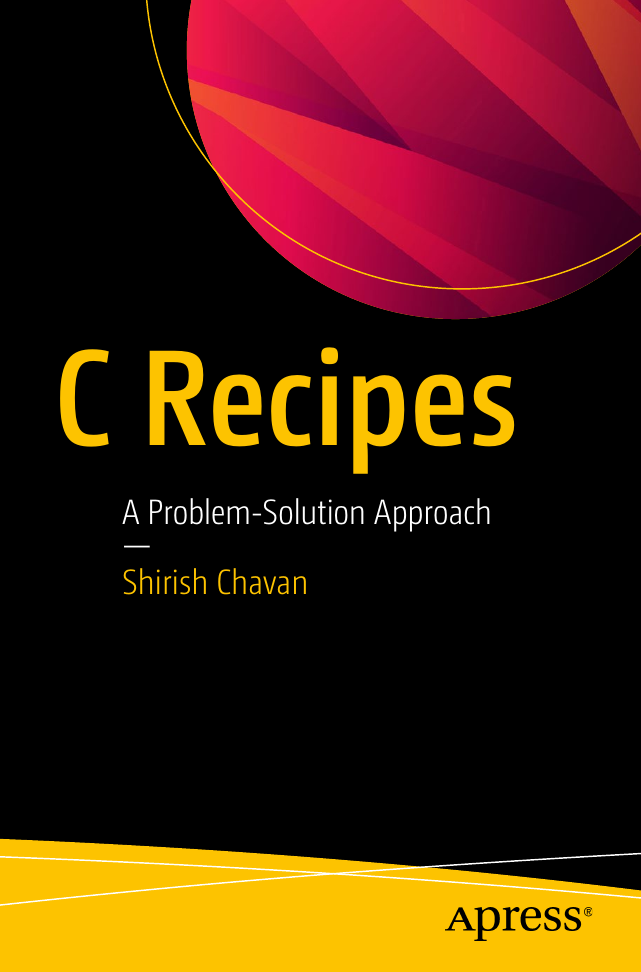
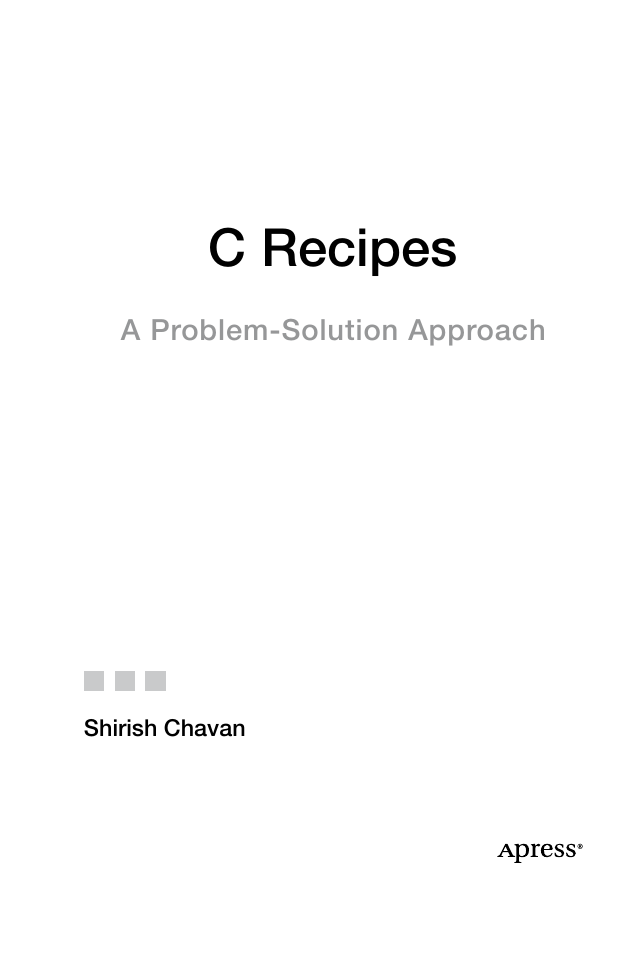
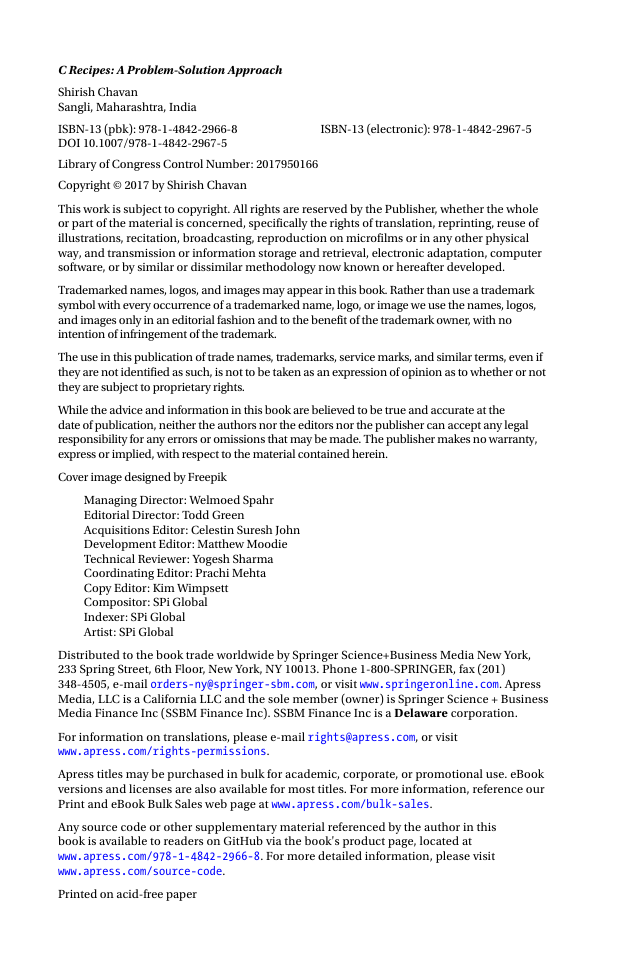

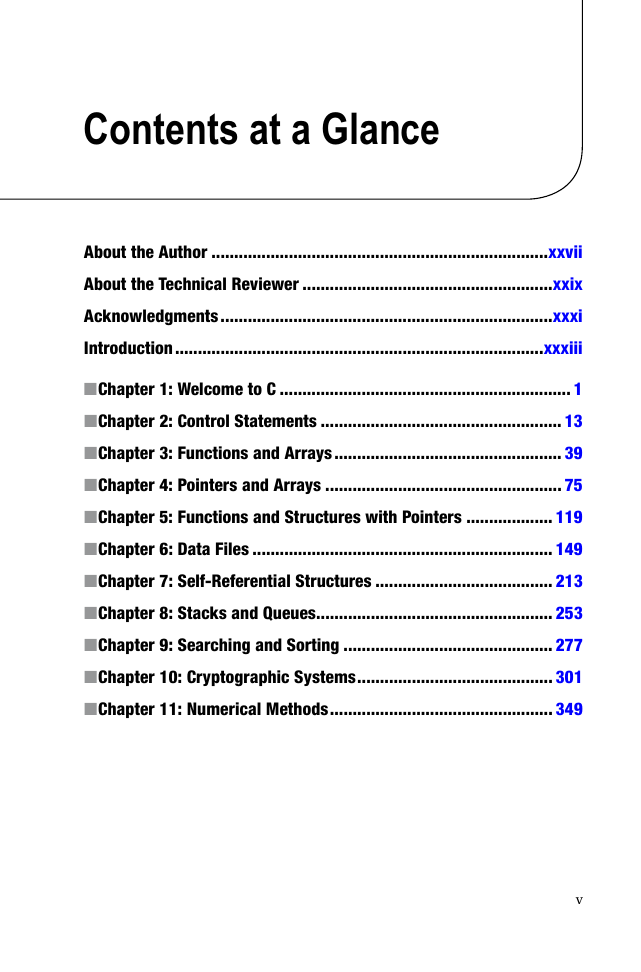

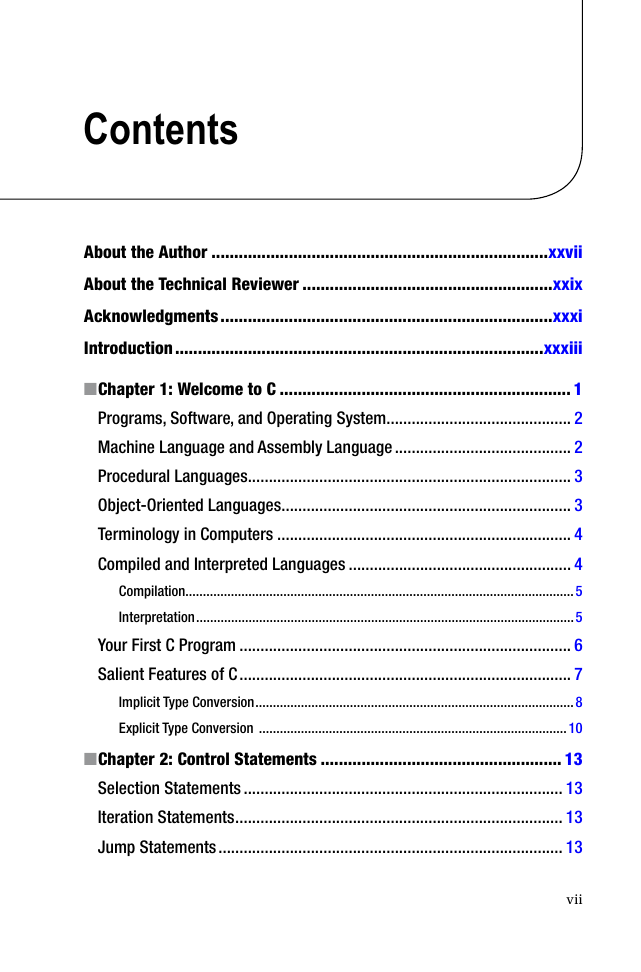
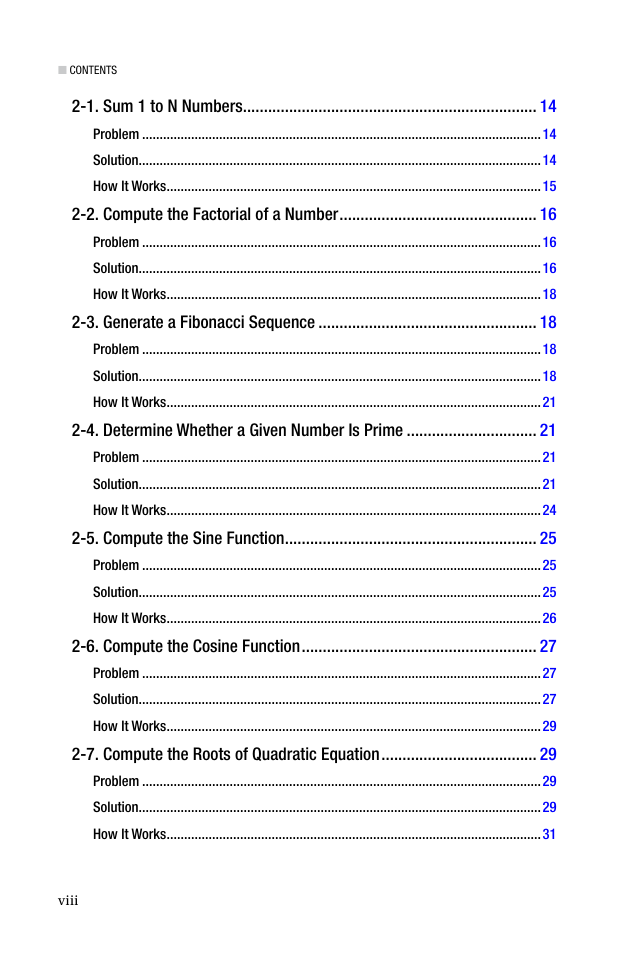








 2023年江西萍乡中考道德与法治真题及答案.doc
2023年江西萍乡中考道德与法治真题及答案.doc 2012年重庆南川中考生物真题及答案.doc
2012年重庆南川中考生物真题及答案.doc 2013年江西师范大学地理学综合及文艺理论基础考研真题.doc
2013年江西师范大学地理学综合及文艺理论基础考研真题.doc 2020年四川甘孜小升初语文真题及答案I卷.doc
2020年四川甘孜小升初语文真题及答案I卷.doc 2020年注册岩土工程师专业基础考试真题及答案.doc
2020年注册岩土工程师专业基础考试真题及答案.doc 2023-2024学年福建省厦门市九年级上学期数学月考试题及答案.doc
2023-2024学年福建省厦门市九年级上学期数学月考试题及答案.doc 2021-2022学年辽宁省沈阳市大东区九年级上学期语文期末试题及答案.doc
2021-2022学年辽宁省沈阳市大东区九年级上学期语文期末试题及答案.doc 2022-2023学年北京东城区初三第一学期物理期末试卷及答案.doc
2022-2023学年北京东城区初三第一学期物理期末试卷及答案.doc 2018上半年江西教师资格初中地理学科知识与教学能力真题及答案.doc
2018上半年江西教师资格初中地理学科知识与教学能力真题及答案.doc 2012年河北国家公务员申论考试真题及答案-省级.doc
2012年河北国家公务员申论考试真题及答案-省级.doc 2020-2021学年江苏省扬州市江都区邵樊片九年级上学期数学第一次质量检测试题及答案.doc
2020-2021学年江苏省扬州市江都区邵樊片九年级上学期数学第一次质量检测试题及答案.doc 2022下半年黑龙江教师资格证中学综合素质真题及答案.doc
2022下半年黑龙江教师资格证中学综合素质真题及答案.doc